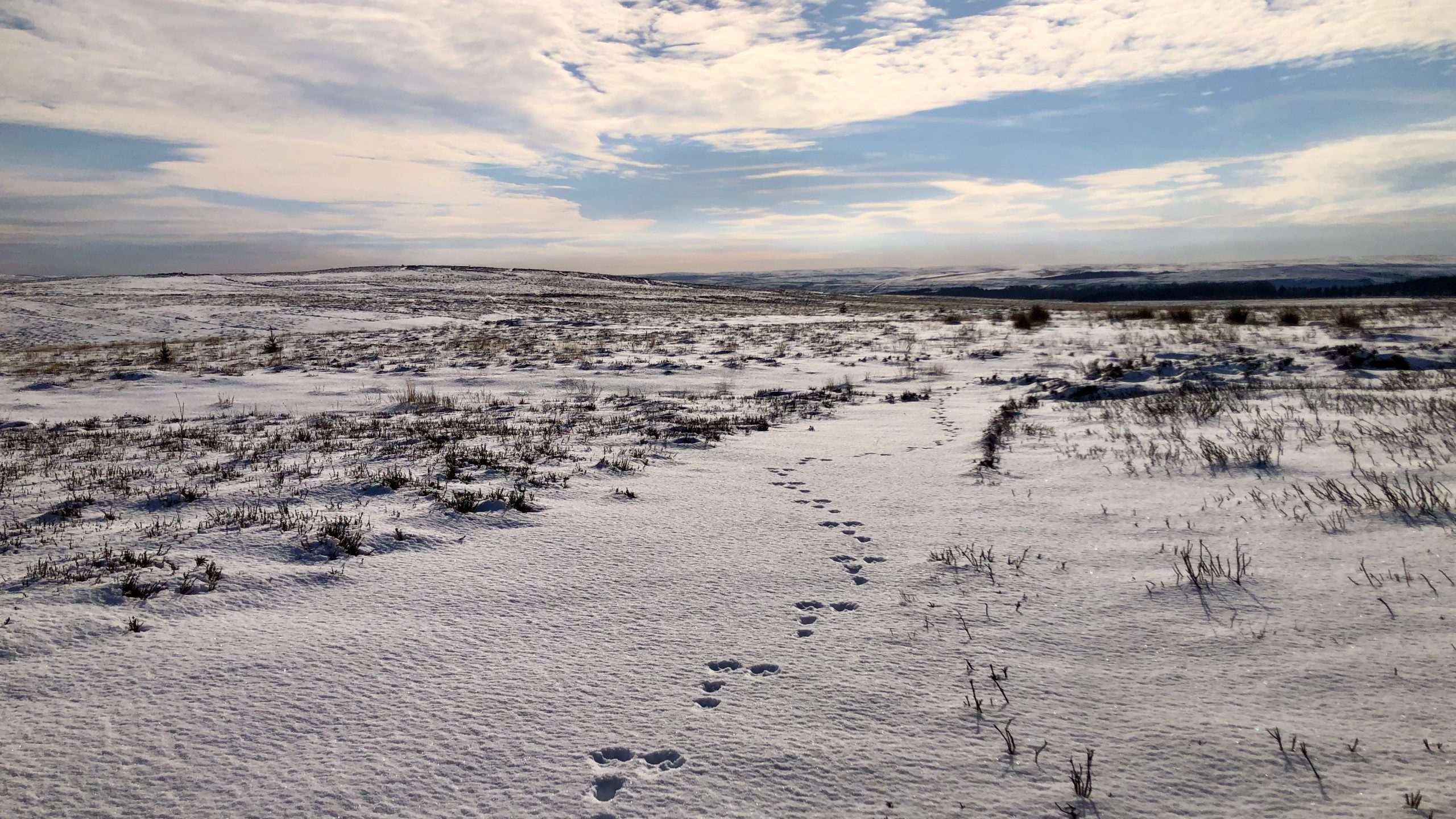A ‘feetin’ is a North Yorkshire word for a footprint, “a mark or impression left by the foot“1“The English Dialect Dictionary, Being the Complete Vocabulary of All Dialect Words Still in Use, or Known to Have Been in Use during the Last Two Hundred Years; Founded on the Publications of the English Dialect Society and on a Large Amount of Material Never before Printed”. In six volumes edited by Joseph Wright, 1898. Volume II. Page 450. Internet Archive, 2014, https://archive.org/details/englishdialectdi02wriguoft. Accessed 10 Apr. 2021.. In East Anglian a variation, ‘feetings’, is used specifically for the tracks of creatures in the snow22023. Twitter <https://twitter.com/RobGMacfarlane/status/954617021479751680?s=09> [accessed 11 March 2023]. I do like this use of the word.
Newton Moor had feetings in abundance this morning. Mostly Grouse, occasionally ending with the outline of their wings as they took off. But these feetings were undoubtably made by hare, much larger than a rabbit. In fact, come to think of it, you don’t see many rabbits on heather dominated moorland.
I followed them for a bit. Once the hare turned back, briefly retracing its own path before executing a remarkable leap to the side and proceeding in an entirely new direction. Undoubtedly, this instinctive manoeuvre is designed to confuse any predators which might be tracking its movements.
At the back of each group are the hare’s two fore prints, one behind the other almost in a line, while at the front are the two hind prints, more side by side and usually longer than the fore prints. This is characteristic of its jumping and galloping gait. The pattern is very regular and always the same, whether the animal is moving slowly, steadily or at top speed. The distance between the print groups and increases with the hare’s speed, and thus varies greatly.
The hind prints of the hare, situated side by side and generally longer than the fore prints, are located at the front of the group, while the fore prints are situated at the back, almost in a straight line. This pattern is a distinct feature of the hare’s movement, whether it is leaping, or galloping, and remaining constant, regardless of whether it is moving at a leisurely or swift pace. As the hare’s speed increases, the distance between the print groups also increases, leading to significant variation.
- 1“The English Dialect Dictionary, Being the Complete Vocabulary of All Dialect Words Still in Use, or Known to Have Been in Use during the Last Two Hundred Years; Founded on the Publications of the English Dialect Society and on a Large Amount of Material Never before Printed”. In six volumes edited by Joseph Wright, 1898. Volume II. Page 450. Internet Archive, 2014, https://archive.org/details/englishdialectdi02wriguoft. Accessed 10 Apr. 2021.
- 22023. Twitter <https://twitter.com/RobGMacfarlane/status/954617021479751680?s=09> [accessed 11 March 2023]

Leave a Reply